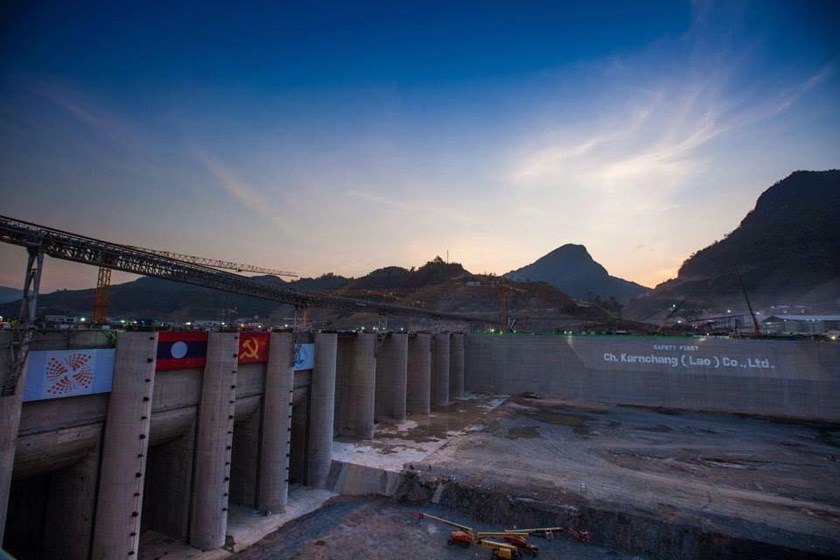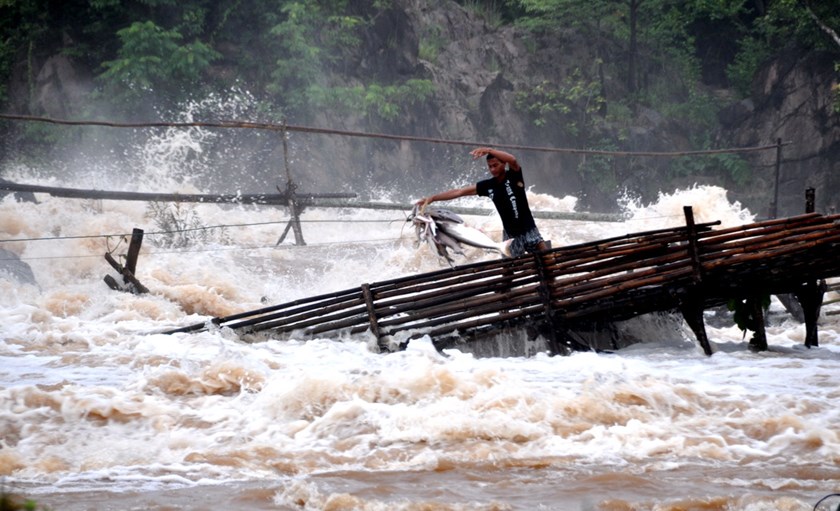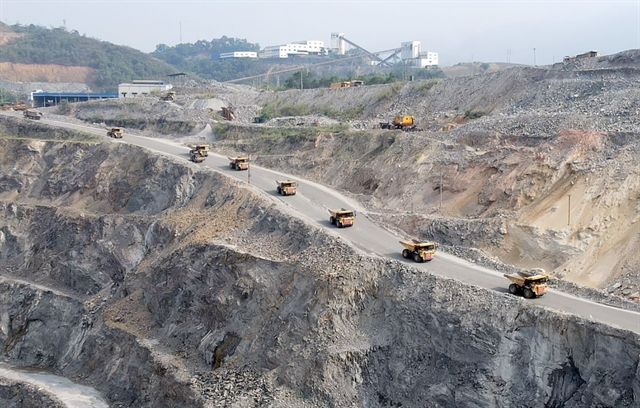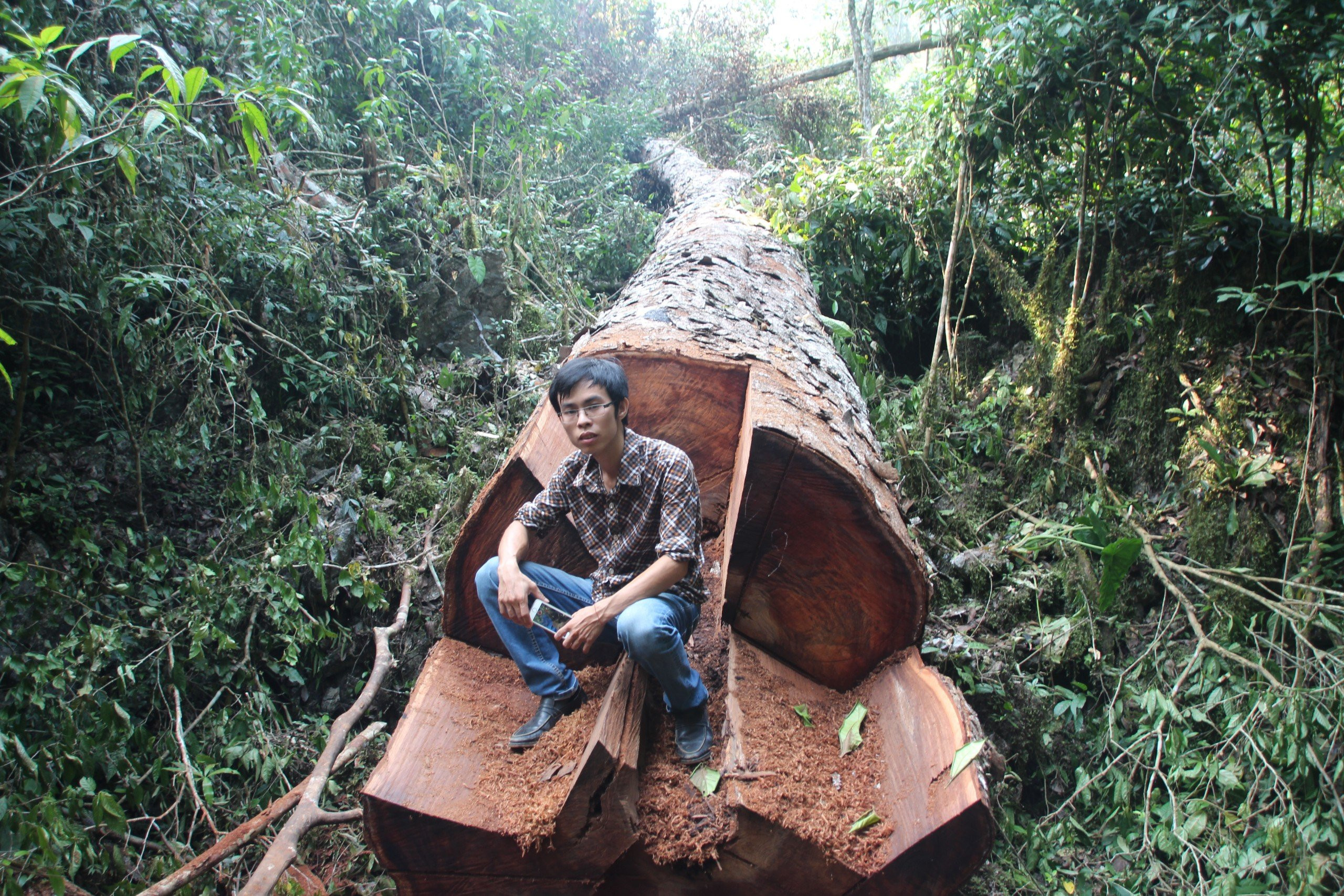Director of the People and Nature Reconciliation (PanNature) Trinh Le Nguyen said mineral resources were public assets owned by the entire people.
Thus, local people in the area that mining activities happened had the right to know specific information about the mine, what type of minerals, and who was assigned to exploit them by the State and local authorities, and what benefits the State, businesses and communities would enjoy from the mining activities, he said.

Vietnam, riparian neighbors exert pressure on Laos over second Mekong dam
Plans for the second dam across the lower Mekong River continue to put Laos on a collision course with its neighbors and environmentalists who fear a damning frenzy would sabotage the livelihoods, fish species and farmland of around 60 million people.

The landlocked nation seems determined to defy international pressure and forge ahead with construction of the Don Sahong, the second of 11 dams planned by Laos on the lower reaches of the 4,900-kilometer (3,045-mile)-long Mekong, which is second only to the Amazon in terms of biodiversity. The 11 dams are expected to generate eight percent of Southeast Asia’s power by 2025.
The four countries that share the lower stretches of the Mekong — Vietnam, Laos Thailand, and Cambodia — were yet again at odds at a meeting Wednesday over the prior consultation (e.g. regional decision-making) process of the 260-megawatt (MW) dam project.
“We are pleased to bring the prior consultation process on the project to a close,” Laos said in a statement at the meeting.
But Vietnam, Thailand, and Cambodia bristled at this position, demand that further studies on the trans-boundary impacts of the dam be conducted before it goes ahead.
“Outcomes of national consultations as well as additional studies carried out by Vietnamese experts all come to the same conclusion that there [remains the lack of] a lot of necessary information,” the Vietnamese delegation said in its statement, calling for extending the consultation process until the end of this year.
Given that stumbling block, the Mekong River Commission — a regional body established to coordinate dam projects on the river — said the issue would be handled at ministerial level at a yet-to-be-announced date.
Environmental groups acknowledge the legitimate concerns of Vietnam, Thailand, and Cambodia.
“The requests…to extend the prior consultation for the Don Sahong dam is not unreasonable given the significant knowledge gaps that still exist and the high level of risk that the project’s proposed mitigation measures carry should they fail,” said Ame Trandem, Southeast Asia program director for International Rivers, a California-based group.
“As cooperation is a two-way process, Laos has the moral imperative to comply with neighboring requests,” she said.
‘At it again’
Vietnam, Laos, Cambodia, and Thailand are bound by a 1995 Mekong treaty that requires each signatory to hold inter-governmental consultations before damming the river. But no single country has veto powers and Laos will have the final say on whether or not to proceed.
Since September 2013, when Laos announced that it would embark on the Don Sahong project, different interpretations of the treaty have already pitted Laos against its riparian neighbors.
Laos has maintained that it needs to only notify its neighbors of its intent to build the dam because it is located neither on a tributary nor the mainstream of the Mekong. Its downstream neighbors, however, have demanded that the consultation process take place before the dam is built, citing its trans-boundary impacts.
Site visits by environmental groups have confirmed that preparatory construction works towards the Don Sahong have got underway since last year.
Environmental groups warn that the dam, slated to be built at a site less than two kilometers from the Cambodian border, threatens to block the only channel that currently allows year-round fish migrations on a large scale.
Many insist the dam will certainly wipe out one of the last populations of endangered Irrawaddy dolphins. The Don Sahong and another Lao dam slated for the Mekong leave the future of the mighty Mekong hanging in the balance, they say.
In November 2012, Laos broke ground on the US$3.8-billion 1,260-megawattXayaburi dam project despite vehement objections from environmental groups and neighboring governments who said the 810-meter (2,600ft) dam would unleash massive ecological changes on a river that feeds around 60 million people. The project is more or less half way complete with the second stage set to begin this month, according to Lao officials.
Opponents of the Xayaburi and Don Sahong projects said their commencement would usher in the construction of the 9 other dams planned by Laos on the Mekong, which begins in the Tibetan plateau and flows through China, Myanmar, Thailand, Laos, Cambodia and Vietnam before emptying into the East Sea (internationally known as the South China Sea).
At the time Laos went ahead with construction of the Xayaburi dam, it also insisted that the prior consultation process on the project was already over, which drew sharp criticism from three other Mekong nations. Since then, the four countries have failed to agree on whether or not the process is still ongoing.
“The failure to reach consensus was interpreted by Laos as a green light to unilaterally move ahead,” said Trinh Le Nguyen, executive director of People and Nature Reconciliation, one of Vietnam’s few locally-based conservation.
“Laos appears to be at it again with the Don Sahong,” Nguyen told Thanh Nien News.
The landlocked nation plans to become the “battery of Southeast Asia” by exporting the vast majority of its power — mostly to Thailand. It is already committed to supplying 7,000 MW to Thailand, 5,000 MW to Vietnam, and 1,500 MW to Cambodia by 2015.
Lao officials have identified hydropower development as the linchpin of the economy.
“For Laos, any dam is very important, because Laos has no other options to improve its economy,” Daovong Phonekeo, director-general of Laos’ Department of Energy Policy and Planning, was quoted by Voice of America news site as saying on January 19.
“Our only option is to develop hydropower,” he said.

Race to the bottom
Analysts say it is clear that the Don Sahong’s negative effects downstream far outweigh the limited energy benefits that the dam would bring. But on the other hand, if the dam-building spree rolls out on the Mekong, the buck would not stop only with Laos, the analysts say.
Thailand does have a big share of the responsibility as its demand for power is the main driver for hydropower construction on the mainstream. Although in the Don Sahong case Thailand may not be the buyer of the electricity, Xayaburi dam paved the way for it, and this is a Thai project more than a Lao one.
Thailand is set to buy about 95 percent of the power generated by the Xayaburi dam and three Thai firms have a stake in the project. In addition, several Thai banks are financing the work.
Meanwhile, Cambodia and Vietnam are also looking to build their own dams on the Mekong tributaries.
“Laos can point to these facts as examples of hypocrisy when other countries criticize its behavior, which limits the ability to constructively discuss how to equalize benefits and consequences in a way that will benefit the region as a whole,” Courtney Weatherby, a Southeast Asia Program research associate at the Washington-based Stimson Center, told Thanh Nien News.
In the meantime, China’s upstream dams continue to cause worries due to the lack of information about the way the water is moving, development plans, cumulative environmental impacts, and trans-boundary impacts. China has constructed or planned to build a total of 13 dams on the cascade.
At the end of the day, analysts say that if national interests continue to prevail, they will set off a race to the bottom in terms of standards set for sustainable use of the natural resources of the Mekong.
“Downstream countries have the most to lose from mismanagement of the resources, and thus Vietnam is the most exposed,” said Marc Goichot, who works for environmental group WWF’s Greater Mekong program on sustainable hydropower.
A number of studies and scientists have pointed out that Vietnam’s Mekong Delta communities all face imminent risks of sinking and shrinking. There are already clear signs that the Delta is very vulnerable to reduction of sediment delivery from the Mekong.
“Xayaburi and Don Sahong dams are challenging the ecosystem integrity of the Mekong. It is also a big challenge to the [Association of Southeast Asian Nations ASEAN] integration agenda,” Goichot said.



